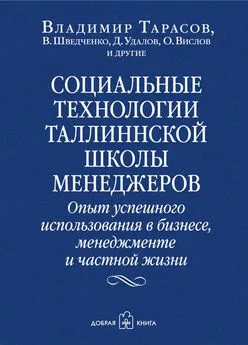Алан Кастел - С возрастом только лучше. Технологии успешного старения
- Название:С возрастом только лучше. Технологии успешного старения
- Автор:
- Жанр:
- Издательство:Лаборатория знаний
- Год:2020
- ISBN:978-5-00101-921-3
- Рейтинг:
- Избранное:Добавить в избранное
-
Отзывы:
-
Ваша оценка:
Алан Кастел - С возрастом только лучше. Технологии успешного старения краткое содержание
Поскольку, как свидетельствует Алан Д. Кастел, готовиться к старости нужно начинать загодя, книга будет интересна читателям самого разного возраста.
С возрастом только лучше. Технологии успешного старения - читать онлайн бесплатно ознакомительный отрывок
Интервал:
Закладка:
8
Cosco, T. D., Prina, A. M., Perales, J., Stephan, В. C., & Brayne, C. (2014). Operational definitions of successful aging: A systematic review. International Psychogeriatrics, 26. 373–381.
9
Merle. A. (2016, April 14). The reading habits of ultrasuccessful people. Huffington Post. http://www.huffingtonpost. com/andrew-merle/the-reading-habits-of-ult_b_9688130.html
10
Jeune, В., Robine, J.-M., Young, R., Desjardins, B., Skyt-the, A., & Vaupel, J. W. (2010). Jeanne Calment and her successors. Biographical notes on the longest living humans. In H. Maier, J. Gampe, B. Jeune, J. W. Vaupel, & J.-M. Robine (Eds.), Supercentenarians (285–323). Berlin, Heidelberg: Springer-Verlag.
11
Olshansky, S. J. (2011). Aging of US presidents. Journal of the American Medical Association, 306, 2328–2329.
12
http://musicvaultz.com/tag/pete-townshend
13
Stephan, Y., Caudroit, J., & Chalabaev, A. (2011). Subjective health and memory self-efficacy as mediators in the relation between subjective age and life satisfaction among older adults. Aging & Mental Health, 15, 428–436; Stephan, Y., Chalabaev, A., Kotter-Grhn, D., & Jaconelli, A. (2013). „Feeling younger, being stronger": An experimental study of subjective age and physical functioning among older adults. Journals of Gerontology. Series B, Psychological Sciences and Social Sciences, 68, 1–7; Kotter-Grhn, D., Kleinspehn-Am-merlahn, A., Gerstorf, D., & Smith, J. (2009). Self-percep-tions of aging predict mortality and change with approaching death: 16-year longitudinal results from the Berlin Aging Study. Psychology and Aging, 24, 654–667.
14
Rubin, D. C., & Berntsen, D. (2006). People over forty feel 20 % younger than their age: Subjective age across the lifespan. Psychonomic Bulletin & Review, 13, 776–780.
15
Возможно, для тех, кому нет сорока, дело обстоит совершенно иначе. Моему сыну скоро исполнится три, однако он регулярно сообщает окружающим, что ему скоро восемь. Я слышал также, что подростки иногда врут насчет своего возраста — например, пытаясь выдать себя за совершеннолетних.
16
Elejalde-Ruiz, A. (October 12, 2011). How old you feel inside? Chicago Tribune, http://www.chicagotribune.com/lifestyles/health/sc-health-1012-senior-health-emotional-age-20111012-story.html
17
Dance, sing, just ‘keep moving,’ Dick Van Dyke tells seniors. An interview with Dick Van Dyke. Weekend Edition Sunday, NPR [National Public Radio], October 11, 2015. http://www. npr. org/2015/10/11/44 7591736/dance-sing-j ust-keep-moving-dick-van-dyke-tells-seniors
18
Hsu, L. M., Chung, J., & Langer, E. J. (2010). The influence of age-related cues on health and longevity. Perspectives on Psychological Science, 5, 632–648.
19
Hsu, L. M., Chung, J., & Langer, E. J. (2010). The influence of age-related cues on health and longevity. Perspectives on Psychological Science, 5, 632–648.
20
Gerstorf, D., Hlr, G., Drewelies, J., Eibich, P., Duezel, S., Demuth, I…. Lindenberg, U. (2015). Secular changes in late-life cognition and well-being: Towards a long bright future with short brisk ending? Psychology and Aging, 30, 301–310.
21
Эта книга фокусируется главным образом на психологии старения, но существует великолепный учебник, описывающий более сложные взаимодействия социальных, психологических и биологических факторов, которые влияют на старение: Whitbourne, S. К., & Whitbourne, S. В. (2010). Adult development and aging: Biopsychologic al perspectives. Hoboken, NJ: John Viley & Sons.
22
В научных кругах имеет широкое хождение шуточка: «Множественное число от слова случай — данные». Она как бы подразумевает, что всякого рода отдельные случаи могут порождать ценные выводы, однако научное исследование куда убедительнее, если в нем учтено множество наблюдений, доступных для количественного анализа.
23
Выражаю признательность д-ру Джею Бренману, сообщившему важные подробности насчет жизненного цикла дрозофилы и ее продолжительности жизни.
24
Впечатляющий пример такого продления жизни дрозофилы см. в: Ulgherait, М., Rana, A., Rera, М., Graniel, J., & Walker, D. W. (2014). AMPK modulates tissue and organismal aging in a non-cell-autonomous manner. Cell Reports, 8, 1767–1780.
25
Schaie, K. W. (2005). What can we learn from longitudinal studies of adult development? Research in Human Development, 2, 133–158.
26
Rnnlund, M., Nyberg, L., Bckman, L., & Nilsson, L. G. (2005). Stability, growth, and decline in adult life span development of declarative memory: Cross-sectional and longitudinal data from a population-based study. Psychology and Aging, 20, 3-18.
27
Исследование Термана вкратце описано в книге Ховарда Фридмана (Howard S. Friedman) и Лесли Р. Мартин (Leslie R. Martin) (двух из тех ученых, которые проводили анализ по следам работ Термана) «The Longevity Project» [ «Проект „Долголетие"»]. В ней представлено множество неожиданных (и развенчивающих мифы) наблюдений и умозаключений по поводу тех факторов, которые влияют на то, насколько хорошо мы стареем и какие типы людей «хорошо живут» даже в старости. Аналогичное исследование, но уже проводившееся на протяжении 30 лет, описано в: George Valliant, Aging Well.
28
Siegel, M., Bradley, E. H., & Kasl, S. V. (2003). Self-rated life expectancy as a predictor of mortality: Evidence from the HRS and AHEAD surveys. Gerontology, 49, 265–271.
29
Cacchione, P. Z., Powlishta, К. K., Grant, E. A., Buckles, V. D., & Morros, J. C. (2003). Accuracy of collateral source reports in very mild to mild dementia of the Alzheimer type. Journal of the American Geriatrics Society, 51, 819–823.
30
Baltes, P. B. (1997). On the incomplete architecture of human ontogeny: Selection, optimization, and compensation as foundation of developmental theory. American Psychologist, 52, 366.
31
Baltes, P. B., & Baltes, M. M. (1990). Psychological perspectives on successful aging: The model of selective optimization with compensation. Successful Aging: Perspectives from the Behavioral Sciences, 1, 1-34.
32
Carstensen, L. L. (2009). A long bright future: An action plan for a lifetime of happiness, health, and financial security. New York: Broadway Books.
33
Hummert, M. L., Garstka, T. A., Shaner, J. L., & Strahm, S. (1995). Judgements about stereotypes of the elderly attitudes, age associations, and typicality ratings of young, middle-aged, and elderly adults. Research on Aging, 17, 168–189.
34
Donlon, M., Ashman, O., Levy, B. R. (2005). Revision of older television characters: A stereotype-awareness intervention. Journal of Social Issues, 61, 307–319.
35
Levy, B. (2009). Stereotype embodiment a psychosocial approach to aging. Current Directions in Psychological Science, 18, 332–336.
36
Levy, B. R., Ferrucci, L., Zonderman, A. B., Slade, M. D., Troncoso, J., & Resnick, S. M. (2016). A culture-brain link: Negative age stereotypes predict Alzheimer’s disease biomarkers. Psychology and Aging, 31, 82–88.
37
Levy, B. R., Zonderman, A. B., Slade, M. D., & Ferrucci, L. (2009). Age stereotypes held earlier in life predict cardiovascular events in later life. Psychological Science, 20, 296–298.
38
Langer, E. J. (2009). Counterclockwise. New York: Random House Digital.
39
Iacono, D., Markesbery, W. R., Gross, M., Pletnikova, O., Ru-dow, G., Zandi, P., & Troncoso, J. C. (2009). The Nun Study. Clinically silent AD, neuronal hypertrophy, and linguistic skills in early life. Neurology, 73, 665–673.
40
Snowdon, D.A., Greiner, L. H., Mortimer, J. A., Riley, К. P., Greiner, P. A., & Markesbery, W. R. (1997). Brain infraction and the clinical expression of Alzheimer disease: The Nun Study. Journal of American Medical Association, 277, 813–817.
41
Iacono, D., Markesbery, W. R., Gross, M., Pletnikova, O., Ru-dow, G., Zandi, P., & Troncoso, J. C. (2009). The Nun Study. Clinically silent AD, neuronal hypertrophy, and linguistic skills in early life. Neurology, 73, 665–673.
42
Cabeza, R., Anderson, N. D., Locantore, J. K., & McIntosh, A. R. (2002). Aging gracefully: Compensatory brain activity in high-performing older adults. Neuroimage, 17, 1394–1402.
43
Tucker, A. M., & Stern, Y. (2011). Cognitive reserve in aging. Current Alzheimer Research, 8, 354–360.
44
Reuter-Lorenz, P. A., & Park, D. C. (2014). How does it STAC up? Revisiting the scaffolding theory of aging and cognition. Neuropsychology Review, 24, 355–370.
45
Bennett, D. A., Schneider, J. A., Tang, Y., Arnold, S. E., & Wilson, R. S. (2006). The effect of social networks on the relation between Alzheimer’s disease pathology and level of cognitive function in old people: A longitudinal cohort study. Lancet Neurology, 5, 406–412.
46
Erickson, K. I., Voss, M. W., Prakash, R. S., Basak, C., Szabo, A., Chaddock, L…. Wojcicki, T. R. (2011). Exercise training increases size of hippocampus and improves memory. Proceedings of the National Academy of Sciences of the United States of America, 108, 3017–3022.
47
Примеры использования такого подхода см. в очень проницательной книге Карла Пиллемера, удачно озаглавленной «30 уроков для жизни» (Karl Pillemer, «30 Lessons for Living»). Пиллемер проинтервьюировал тысячу с лишним американцев старше 65 лет, стараясь получить от них практические рекомендации по всем вопросам нашей жизни, от семьи и детей до денег и карьеры.
Читать дальшеИнтервал:
Закладка:










